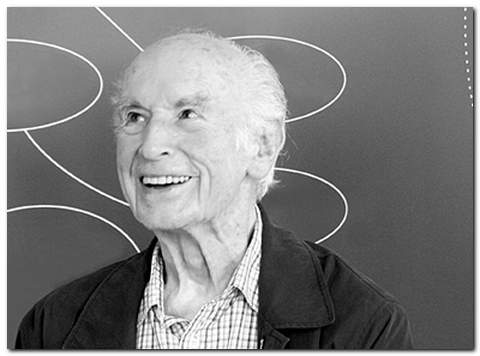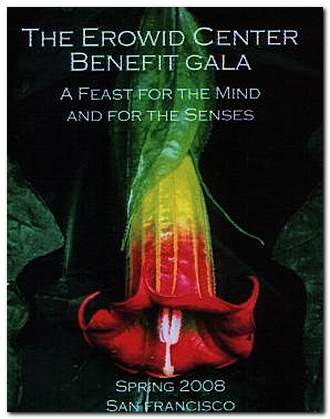 |
|

Albert Hofmann in 2006 (2006-12-28 )
Albert Hofmann während eines Gesprächs "Über Schönheit" im Helmhaus
Zürich.
Albert Hofmann during a discussion "about beauty" at the Zürich
Helmhaus.
|
|
|
| 31.03.2008 - Albert der Hundertjährige... |
|
|
Baden,
Switzerland, and studied chemistry at the University of Zürich.
His main interest was the chemistry of plants and animals, and he later
conducted important research regarding the chemical structure of the
common animal substance chitin, for which he received his doctorate.
Hofmann joined the pharmaceutical-chemical department of Sandoz
Laboratories (now Novartis), located in Basel, studying the medicinal
plant squill and the fungus ergot as part of a program to purify and
synthesize active constituents for use as pharmaceuticals.
On April 19, 1943, Hofmann deliberately consumed 250 micrograms of LSD
before his bicycle ride home (later known as Bicycle Day see also: LSD
for details). This was followed by a series of self-experiments
conducted by Hofmann and his colleagues. He first wrote about these
experiments on April 22 of that year.
He became director of the natural products department at Sandoz and
went on studying hallucinogenic substances found in Mexican mushrooms
and other plants used by the aboriginal people. This led to the
synthesis of psilocybin, the active agent of many "magic mushrooms."

Hofmann also became interested in the seeds of the Mexican morning
glory species Rivea corymbosa, the seeds of which are called Ololiuhqui
by the natives. He was surprised to find the active compound of
Ololiuhqui, ergine (lysergic acid amide), to be closely related to LSD.
“I think that in human evolution it has never been as necessary
to have this substance LSD. It is just a tool to turn us into what we
are supposed to be."

In 1962, he and his wife Anita traveled to southern Mexico to search
for the plant "Ska Maria Pastora" (Leaves of Mary the Shepherdess),
later known as Salvia divinorum. He was able to obtain samples of this
plant but never succeeded in identifying its active chemicals which
science has now identified as the diterpenoid Salvinorin A.
In 1963 Hofmann attended the annual convention of the World Academy of Arts and Sciences (WAAS) in Stockholm.
Hofmann calls LSD "medicine for the soul" and is frustrated by the
worldwide prohibition that has pushed it underground. "It was used very
successfully for 10 years in psychoanalysis," he said, adding that the
drug was hijacked by the youth movement of the 1960s and then unfairly
demonized by the establishment that the movement opposed. He concedes
LSD can be dangerous in the wrong hands. Hofmann will be speaking at
the World Psychedelic Forum from March 21 to March 24, 2008.


|
|
|
|
 |
|